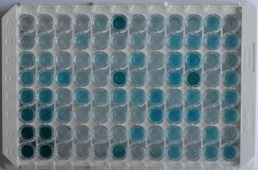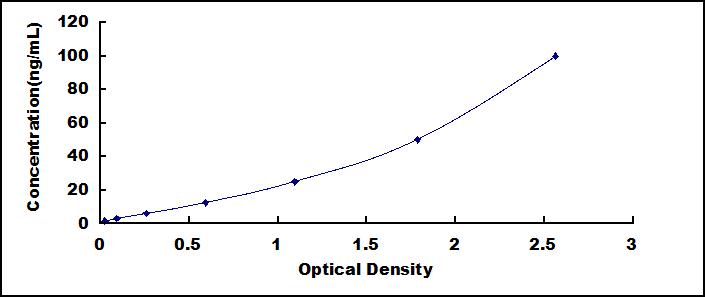Packages (Simulation)

Reagent Preparation

Image (I)
Image (II)
Certificate


ELISA Kit for Serum Amyloid P Component (SAP)
APCS; PTX2; Pentaxin-Related; 9.5S Alpha-1-Glycoprotein
- Product No.SEB539Hu
- Organism SpeciesHomo sapiens (Human) Same name, Different species.
- Sample Typeserum, plasma, tissue homogenates and other biological fluids
- Test MethodDouble-antibody Sandwich
- Assay Length3h
- Detection Range1.56-100ng/mL
- SensitivityThe minimum detectable dose of this kit is typically less than 0.65ng/mL.
- DownloadInstruction Manual
- UOM 48T96T 96T*5 96T*10 96T*100
- FOB
US$ 466
US$ 665
US$ 2993
US$ 5653
US$ 46550
For more details, please contact local distributors!
Specificity
This assay has high sensitivity and excellent specificity for detection of Serum Amyloid P Component (SAP).
No significant cross-reactivity or interference between Serum Amyloid P Component (SAP) and analogues was observed.
Recovery
Matrices listed below were spiked with certain level of recombinant Serum Amyloid P Component (SAP) and the recovery rates were calculated by comparing the measured value to the expected amount of Serum Amyloid P Component (SAP) in samples.
| Matrix | Recovery range (%) | Average(%) |
| serum(n=5) | 86-101 | 96 |
| EDTA plasma(n=5) | 79-89 | 84 |
| heparin plasma(n=5) | 94-101 | 98 |
Precision
Intra-assay Precision (Precision within an assay): 3 samples with low, middle and high level Serum Amyloid P Component (SAP) were tested 20 times on one plate, respectively.
Inter-assay Precision (Precision between assays): 3 samples with low, middle and high level Serum Amyloid P Component (SAP) were tested on 3 different plates, 8 replicates in each plate.
CV(%) = SD/meanX100
Intra-Assay: CV<10%
Inter-Assay: CV<12%
Linearity
The linearity of the kit was assayed by testing samples spiked with appropriate concentration of Serum Amyloid P Component (SAP) and their serial dilutions. The results were demonstrated by the percentage of calculated concentration to the expected.
| Sample | 1:2 | 1:4 | 1:8 | 1:16 |
| serum(n=5) | 78-90% | 93-101% | 98-105% | 95-104% |
| EDTA plasma(n=5) | 92-105% | 89-103% | 79-95% | 78-94% |
| heparin plasma(n=5) | 89-98% | 92-105% | 80-99% | 90-99% |
Stability
The stability of kit is determined by the loss rate of activity. The loss rate of this kit is less than 5% within the expiration date under appropriate storage condition.
To minimize extra influence on the performance, operation procedures and lab conditions, especially room temperature, air humidity, incubator temperature should be strictly controlled. It is also strongly suggested that the whole assay is performed by the same operator from the beginning to the end.
Reagents and materials provided
| Reagents | Quantity | Reagents | Quantity |
| Pre-coated, ready to use 96-well strip plate | 1 | Plate sealer for 96 wells | 4 |
| Standard | 2 | Standard Diluent | 1×20mL |
| Detection Reagent A | 1×120µL | Assay Diluent A | 1×12mL |
| Detection Reagent B | 1×120µL | Assay Diluent B | 1×12mL |
| TMB Substrate | 1×9mL | Stop Solution | 1×6mL |
| Wash Buffer (30 × concentrate) | 1×20mL | Instruction manual | 1 |
Assay procedure summary
1. Prepare all reagents, samples and standards;
2. Add 100µL standard or sample to each well. Incubate 1 hours at 37°C;
3. Aspirate and add 100µL prepared Detection Reagent A. Incubate 1 hour at 37°C;
4. Aspirate and wash 3 times;
5. Add 100µL prepared Detection Reagent B. Incubate 30 minutes at 37°C;
6. Aspirate and wash 5 times;
7. Add 90µL Substrate Solution. Incubate 10-20 minutes at 37°C;
8. Add 50µL Stop Solution. Read at 450nm immediately.
GIVEAWAYS
INCREMENT SERVICES
-
 Single-component Reagents of Assay Kit
Single-component Reagents of Assay Kit
-
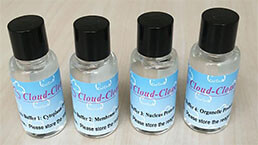 Lysis Buffer Specific for ELISA / CLIA
Lysis Buffer Specific for ELISA / CLIA
-
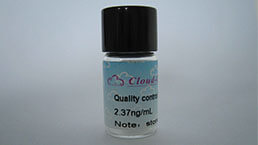 Quality Control of Kit
Quality Control of Kit
-
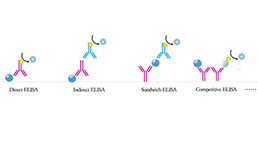 ELISA Kit Customized Service
ELISA Kit Customized Service
-
 Disease Model Customized Service
Disease Model Customized Service
-
 Serums Customized Service
Serums Customized Service
-
 TGFB1 Activation Reagent
TGFB1 Activation Reagent
-
 Real Time PCR Experimental Service
Real Time PCR Experimental Service
-
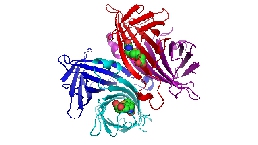 Streptavidin
Streptavidin
-
 Fast blue Protein Stain solution
Fast blue Protein Stain solution
-
 Single-component Reagents of FLIA Kit
Single-component Reagents of FLIA Kit
-
 Streptavidin-Agarose Beads
Streptavidin-Agarose Beads
| Magazine | Citations |
| Journal of Vascular Surgery | Circulation levels of acute phase proteins in patients with Takayasu arteritis PubMed: 20100644 |
| Journal of Proteome Research | Combined Proteomic and Metabolomic Profiling of Serum Reveals Association of the Complement System with Obesity and Identifies Novel Markers of Body Fat Mass Changes ACS: pr2005555 |
| Liver International | Identification of candidate biomarkers for hepatocellular carcinoma in plasma of HCV-infected cirrhotic patients by 3-D DIGE Pubmed: 23944848 |
| Journal of Proteome Research | Targeted proteomics predict a sustained complete-response after transarterial chemoembolization and clinical outcomes in patients with hepatocellular carcinoma: a prospective cohort study pubmed:28112944 |
| American Journal of Reproductive Immunology | Amniotic fluid pentraxins: Potential early markers for identifying intra‐amniotic inflammatory complications in preterm pre‐labor rupture of membranes pubmed:29193454 |
| Theranostics | Serum amyloid P component therapeutically attenuates atherosclerosis in mice via its effects on macrophages Pubmed:29930724 |
| J Med Primatol | Proteopathic lesions in the brain of a super©\aged chimpanzee (Pan troglodytes) 34096618 |
| Clinical and Experimental Immunology | Clinical significance of differential serum-signatures for early prediction of severe dengue among Eastern Indian patients Pubmed:35348620 |

